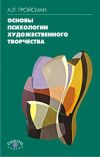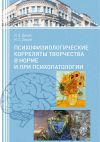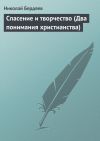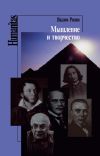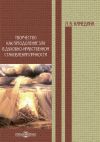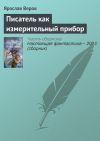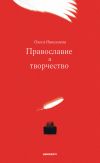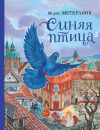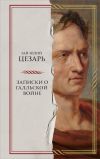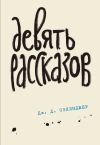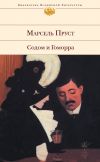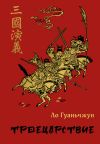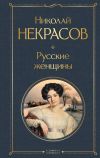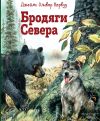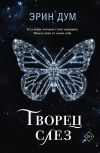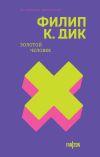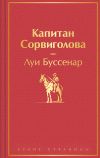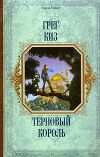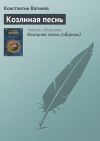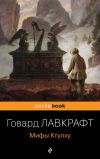Текст книги "Психология творчества, креативности, одаренности"
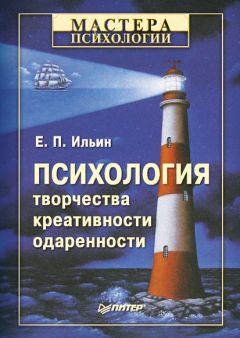
Автор книги: Евгений Ильин
Жанр: Классики психологии, Книги по психологии
сообщить о неприемлемом содержимом
Текущая страница: 45 (всего у книги 46 страниц)
Press. 1992.
Finke R. A., Ward T. B., Smith S. M. The creative cognition approach. Cambridge. M. A. MIT Press. 1995. Forisha B. L. Creativity and imagery in men and women // Perceptual and Motor Skills. 1978. V. 47. P. 12551264.
Foster J. Creativity and Teacher. Macmillan. 1971.
Friedman R. S., Fishbach A., Forster J., Werth L. Attentional Priming Effects on Creativity // Creativity
Research Journal. 2003. V. 15. № 2–3. P. 277–286. Frischeiser-Kohler I. The personal tempo and its inheritance // Character and Personality. 1933. № 1. Frohlich A. Aesthetic Paradoxes of Abstract Expressionism and Pop Art // British Journal of Aesthetic.
1966. V. 6. № 1. P. 17–25. Fuchs B. K., Karnes M. B., Johnson L. J. Creativity and intelligence in preschoolers // Gifted Child
Quarterly. 1993. V. 37 (3). P. 113–117. Gagne F. Constructs and models pertaining to exceptional human abilities // K. A. Heller, F. J. Monsk, H.
Passow (eds.). International handbook of research and development of giftedness and talent. Oxford.
1993. P. 76–86.
Gaillard J. M. The expression of psychodynamic forces in the paintings of Modigliani // International Journal Short-Term Psychotherapy. 1992. V. 7. P. 109–122.
Galton F. Hereditary Genius. NY. Julian Friedman. 1869–1978. Gardner H. Frames of mind. NY. Heinemann. 1984.
Gardner H. Creativity lives and creative works: a synthetic scintific approach // R. Sternberg, T. Tardif
(eds.). The nature of creativity. Cambridge. Cambridge University Press. 1988. P. 298–324. Gardner H. Creating minds. NY. Basic Books. 1993.
Gardner R. W., Holzman P. S., Klein G. S., Linton H. B., Spence D. P. Cognitive control. A study of individual consistencies in cognitive behavior // Psychological Issues. Monograph 4. V. 1. NY.
1959.
Gardner R. W., Jackson D. N., Messick S. J. Personality organization in cognitive controls and intellectual
abilities // Psychological Issues. Monograph 8. V. 2. NY. 1960. Geary D. C. Male, female: The evaluation of human sex differences. Washington, DC. Am. Psychol. Ass. 1998. Gelade G. A. Creativity in conflict: The personality of the commercial creative // Journal of Genetic
Psychology. 1997. V. 158. № 1. P. 67–78. Getzels J. W., Scikzentmihaly P. W. Creative thinking // Science Journal. 1967.
Getzels J. W., Jackson P. W. Creativity and intelligence: Explorations with gifted children. NY. Wiley. 1962. Ghiselin B. Ultimate Criteria for Two Levels of Creativity // C. W. Taylor, F. Barron (eds.). Scientific
Creativity. NY. 1963.
Glasser R. Education and thinking: The role of knowledge // American Psychology. 1984. V. 39. P. 93–104. Getzels J. W., Jackson P. W. Creativity and Intelligence. London. NY. 1968.
Gifford S., Murawski B., Brazelton B., Berry T., Young G. Differences in individual development within a pair of identical twins // International Journal of Psycho-Analysis. 1966. V. 47. № 2–3.
Goertzel M. G., Goertzel V., Goertzel T. G. Three Hundred Eminent Personalities, San Francisco: Jossey-Bass. 1978.
Goldberg P. The intuitive edge. Understanding and developing intuition. Los Angeles. Jeremy P. Tarcher
Inc. 1983.
Goldberg P. The intuitive experience // W. H. Agor (ed.). Intuition in organizations: Leading and
managing productively. Newbury Park, CA. Sage. 1989. P. 173–194. Goorden W.J.J. Synectics. The Development of Creative Capacity. NY. 1961. Gordon W. J. Synestetics: The Development of Creative Capacity. Harper. 1961.
Gough H. G. A creative personality scale for the Adjective Check List // Journal of personality band Social
Psychology. 1979. V. 37. P. 1398–1405. Gough H. G., Woodwoth D. G. Stylistic Variations among Professional Research Scientist // Journal of
Psychology. 1960.
Gruber H. On the hypothesized relation between giftedness and creativity // D. H. Feldman (ed.). New
directions for child development: № 17. Developmental approaches to giftedness and creativity. San
Francisco. Jossey-Bass. 1982. Gruber H. The self-construction of the extraordinary // K. Sternberg et al. (eds.). Conceptions of
giftednes. Cambridge. Cambridge University Press. 1986. P. 247–263. Gruber H., Devis S. Inching our way up Mount Olympus: the evolving-systems approach to creative
thinking // R. Sternberg, T. Tardif (eds.). The nature of creativity. Cambridge. Cambridge University
Press. 1988. P. 243–270.
Gruszka A., Necka E. Priming and Accertance of Close and Remote Associations by Creative and Less
Creative People // Creative Research Journal. 2002. V. 14. № 2. P. 193–205. Guilford J. P. Creativity // American Psychologist. 1950. V. 5. P. 444–454. Guilford Y. P. The nature of human intelligence. NY. Mc-Graw Hill. 1967. Guilford Y. P. Measurement of creativity // Exploration in creativity. NY. 1967. P. 281–287. Guilford Y. P. Trait of Creativity // P. E. Vernon (ed.). Creativity. 1972.
Guilford Y. P., Christensen P. R. The one-may relation between creative potential and IQ // Journal of
creative behavior. Buffalo. 1973. V. 7. Gutman H. The biological roots of creativity // Exploration in creativity. NY. 1967. Haddon F., Lytton H. Teaching approach and divergent thinking abilities // British Journal of Educational
Psychology. 1968. V. 138.
Halpern D. F. Sex differences in cognitive abilities. Mahwah. NY. L., Lawrence Erlbaum Ass. Publ. 2000.
Harpatz J. Asymmetry of hemispheric function and creativity: An empirical examination // Journal
Creative Behavior. 1990. V. 24. № 3. P. 161. Harrington D. M., Block J. H., Block J. Testing aspects of Carl Rodger's theory of creative environments in
young adolescents // Journal of Personality and Social Psychology. 1987. V. 52. P. 851–856. Heller K. A. Evaluation of programs for the gifted // M. W. Katzko, F. J. Monsk (eds.). Nurturing Talent,
individual needs and social ability. The 4-th conference of ECHA. Assen, Van Gorcum. 1995. P. 264–268. Heller K. A. Psychologische Probleme der Hochbegabungsforschung // Zeitschrift fur Entwicklungspsychologie
and Padagogische Psychologie. 1986. Bd. XVIII. Heft 4. S. 335–361. HellerK. A., GeislerH.J. Kognitiver Fahigkeits. Test fur 1. Bis 3. Klassen (KFT 1–3). Weinheim: Beltz. 1983. Henley R. Distinguishing insight from intuition // Journal of Consciousness Studies. 1999. V. 6. № 2–3.
P. 287–290.
Hennessey B. A., Amabile T. M. The conditions of creativity // R.J.Sternberg (ed.). The nature of creativity:
Contemporary psychological perspectives. Cambridge. England. Cambridge University Press. 1988. Hes E. Attitude and puple size // Scientific American. 1965. P. 212.
Hilgard E. R., Edgren R. D., Irvine R. P. Errors in transfer following learning with understanding: further studies with Katona's cardtrick experiments // J. exper. Psychol. 1954. V. 47. P. 457–464.
Hill O. W. Intuition: Inferential heuristic or epistemic mode? // Imagin. Cognition and Person. 19871988. V. 79. № 2. P. 137–154.
Hlavsa J. Pojmova struktura tvurciho intelektu // Cheskoslovenska psychologie. 1972. V. 16. № 2.
Hogarth R. M. Educating intuition. Chicago, IL. University of Chicago Press. 2001.
Horny K. Our inner conflicts. NY. 1966.
Howard-Jones P. A., Myrray S. Ideational Productivity, Focus of Attention and Context // CreativityResearch
Journal. 2003. V. 15. № 2–3. P. 153–166. Howe M. J. A. What can we learn from the lives of genuises? // J. Freeman, P. Span, H. Wagner (eds.).
Actualizing talent: a lifelong challenge. Cassell. 1995. Hull C. L. Hypnosis and Suggestibility an Experimenal Approach. NY. Appleton – Century – Crofts. 1933. Isen A. M. Positive affect and decision making // M. Lewis, J. M. Haviland (eds.). Handbook of emotions.
NY. Guilford. 1993. P. 261–277. Isen A. M. On the relstionship between affact abd creative problem solving // S. Russ (ed.). Affect,
creative experience and psychological adjustmen. Philadelphia: Taylor and Francis. 1999. P. 3–17. Isen A. M. Positive affect as a sourse of human strength // L. G. Aspinwall, U. M. Staudinger (eds.).
A psychology of human strengths: Fundamental questions and future directions for a positive
psychology. Washington, DC. American Psychological Association. 2003. P. 179–195. Isen A. M., Daubman K. A. The influence of affect on categorization // Journal of Personality and Social
Psychology. 1984. V. 47. P. 1206–1217. Isen A. M., Daubman K. A., Nowicki G. P. Positive affect facilitates creative problem solving // Journal of
Personality and Social Psycholoogy. 1987. V. 52. P. 1122–1131. Isen A. M., Johnson M. M., Mertz E., Robinson G. F. The influence of positive affect on the unusualness of
word associations // Journal of Personality and Social Psychology. 1985. V. 48. P. 1413–1426. Jacobs J. E, Weisz V. Gender stereotypes: Implications for gifted education // Roeper Review. 1994. V. 16.
№ 3. P. 152–155. Jamison K. Touched with Fire. NY. Free Press. 1994.
Jarvick I. R., Chadwicki S. B. Schizophrenia and survival // M. Hummer, K. Salzinger, S. Sutton (eds.).
Psychopathology. NY. Wiley. 1973.
Jekobson E. The Electrophysiology of Mental Activities // American Journal of Psychology. 1932. V. 44. Jones T. P. Creative learning in perspective. London. 1972.
Johnson W. L., Johnson A. M. A third-order component analysis of the Myers-Briggs Type Indicator //
Educational and Psychological Measurement. 1998. V. 59. № 5. P. 820–832.
Jonsson P., Carlsson I. Androgyny and creativity: A study of relationship between a balanced sexrole and creative functioning // Scand. Journal Psychology. 2000. V. 41. P. 269–274.
Johnston W. L., Daumer C. R. Intuitive development: Communication in the nineties // Publish. Personal Management. 1993. V. 22. № 2. P. 257–269.
Karlson Y. L. Inheritance of creative intelligence. Chicago. 1978. P. 138.
Kasof J. Creativity and breadth of attention // Creativity Research Journal. 1997. V. 10. № 4. P. 303–315. Kaufmann F. The 1964–1968 Presidential Scholars: A follow-up study // Exceptional Children. 1981.
V. 48. № 2.
Kerr B. A. Smart girls, gifted women: Special guidance concerns // Roeper Review. 1985. V. 8. P. 30–33. Kihlstrom J. F., Shames V. A., DorfmanJ. Intimations of memory and thought // L. M. Reder (ed.). Implicit
memory and metacognition. Mahwah. NY. Erlbaum. 1996. P. 1–23. Kirton M. J. Adaptors and Innovators. London. Routledge. 1994.
Kleemeier N. W. Intellectual change in the senium // Proc. of the social statistics. Section of the Americ.
Statist. Associative. NY. 1962. P. 290–295. Koestler A. The sleepwalkers. London. Hutchinson. 1959. Koestler A. The act of creation. London. Hutchinson. 1964.
Kohler G., Ruch W. Sources of variance in current sense of humor inventories: How much substance, how much
method variance? // Humor. International Journal of Humor Research. 1996. V. 9 (3–4). P. 363–397. Koppel M. A., Sechrest L. A multitrait-multimethod matrix analysis of sense of humor // Educational and
Psychological Measurement. 1970. V. 30 (1). P. 77–85.
Kostik M. M. A study of transfer: sex differences in the reasoning process // J. educ. Psychol. 1954. V. 45.
P. 449–458.
Kuhl J. Action control: The maintance of motivational states // F. Hallish, J. Kuhl (eds.). Motivation,
intention and action. Berlin. Springer. 1985. P. 279–292. Langly P., Johns R. A computational model of scintific insight // R. Sternberg, T. Tardif (eds.). The nature
of creativity. Cambridge. Cambridge University Press. 1988. P. 177–201. Leach P. L. A critical study of the literature concerning rigidity // Brit. J. Soc. and Clin. Psychol. 1967.
V. 6. № 1. P. 11–12.
Lehman H. C. The chronological ages of greatest productivity chemist, inventors, poets et altera //
Psychological Bulletin. 1935. V. 2. № 9. Lehman H. C. The creative years. Medicine, surgery and certain related fields // Scientific Monthly. 1941. V. 52. Lehman H. C. Average at time and achievement versus longevity // American Journal of Psychology.
1951. V. 64. P. 534–547. Lehman H. C. Age and Achievement. Princeton. Princeton University Press. 1953. Lehman H. C. The influence of longevity upon curves showing man's creative production rate at succercive
age and levels // Journal of Gerontology. 1958. V. 13. P. 178–191. Letzel I. W., Philip W. L. Creativity and intelligence. NY. 1968.
Lewicki P., Hill T., Czyzewska M. Nonconscious aquisition of information // American Psychologist. 1992.
V. 47. № 6. P. 796–801.
LiJ. Creativity in horizontal and vertical domains // Creativity Research Journal. 1997. V. 10. P. 107–132. Li R. A theory of conceptual intelligence: Thinking, learningand giftedness. NY. Praeger Publishers. 1996. Lieberman M. D. Intuition: A social cognitive neuroscience approach // Psychological Bulletin. 2000. V. 126. № 1. P. 109–137.
Loehlin J. C. Genes and environment in personality development. Newbery Park, Ca. Sage. 1992. Lubart T. I., Getz I. Emotion, metaphor and the creative process // Creativity Research Journal. 1997. V. 10. № 4. P. 285–301.
Lubart T. I., Sternberg R.J. An investment approach to creativity: Theory and data // S. M. Smith, T. B. Ward, R. A. Linke (eds.). The creative cognition approach. Cambridge, MA. MIT Press. 1995.
Ludwig A. M. The price of greatness: Resolving the creativity and madness controversy. NY. London. The Guilford Press. 1995.
Lytton H. Creativity and education. London. Rotledge and Kegan. 1971.
Mace C. The Psychology of Study. London. Penguin Books. 1962.
MacCabe M. P. Influence of creativity and intelligence on academic performance // Journal Creative
Behavior. 1991. V. 25 (2). P. 116–122. McGrae R. Creativity, divergent thinking and openness to experience // Journal of Personality and Social
Psychology. 1987. V. 52. № 6. P. 1258–1265. MacKinnon D. W. The Nature and Nurture of Creative Talent // American Journal of Psychology. 1962.
V. 17.
MacKinnon D. W. Personality and the realization of creative potential // American Psychologist. 1965.
V. 20. P. 273–281.
MacKinnon D. W. The personality correlates of creativity: A study of American architects // P. E. Vernon
(ed.). Creativity, L. 1972. P. 289–311. Madigan C. O., Elwood A. Brainstorm and thunderbolts. NY. Macmillan. 1984.
Manturzewska M. Musical talent in the ligth of biografical research // Musikalische Begabung finden und forden. Bosse. 1986.
Manturzewska M. A biografical study of the life-span development of professional musicians //
Psychology of Musik. 1990. V. 18. P. 112–139. Marsh R. L., Landau J. D., Hichs J. I. How examples may (and may not) constrain creativity // Memory
and Cognition. 1996. V. 24. № 5. P. 669–680. Martindale C. Personality, situation and and creativity // J. A. Glover, R. R. Ronning, C. R. Reynolds
(eds.). Handbook of creativity. NY. Plenum. 1989. P. 211–232. Martindale C., Greenough J. Evalution of training in creative problem-solving test // Journal of genetical
psychology. 1973. V. 123. № 2.
Martindale C. Creativity and connectionism // S. M. Smith, T. B. Ward, R. A. Finke (eds.). The creative
cognition approach. Cambridge, MA. Bradford. 1995. P. 249–268. Martindale C. et al. Creativity, oversensitivity and rate of habituation // Personality and Individual
Differences. 1996. V. 20. P. 423–427. Maslow A. H. Creativity in self-actualising people // H. H. Anderson (ed.). Creativity and its cultivation.
NY. Harper. 1959.
Mayer R. E. Thinking, problem solving, cognition. NY. W. H. Freeman. 1983.
Meadow A., Parners S. J. Evaluation of training in creativity problem-solving test // Journal appel.
Psychology. 1959. V. 43.
Mednick S. A. The associative basis of the creative process // Psychological Review. 1962. V. 69. № 2.
P. 220–232.
Mednick S. A., Mednick M. T. An associative interpretation on the creative process // C. W. Taylor (ed.).
Widenigh horisonts in creativity. 1964. Menuchin Y. Unfinished journey. London. MacDonald and Janes. 1979.
Miller G. A., Galanter E. H., Pribram H. H. Plants and the structure of Behavior. NY. Holt. 1960.
Moles A. La creation scientifique. Geneve. 1957.
Moles A. Methodologie de la creation scientifique. Paris. 1963.
Monass J. A., Engelhard J. A. Jr. Home environment and the competitiveness of accomplished individuals in four talent fields // Developmental Psychology. 1990. V. 26. P. 264–268.
Moneta G. A model of scientist's creative potential // Psychology. 1993. V. 6 (1). P. 23–37.
Monsk F. J. Development of gifted children: The issue of identification and programming // F. J. Monsk (ed.). Talent for the future. Assen. Van Gorcum. 1992. P. 191–202.
MumfordM., Gustafson S. Creativity syndrome: integration, application and innovation // Psychological
Bulletin. 1988. V. 103. P. 27–43.
Murdock M. C., Ganim R. M. Creativity and humor: Integration and incongruity // Journal of Creative
Behavior. 1993. V. 27 (1). P. 57–70. Myers D. G. Intuition: The powers and perils of inner knowing. New Haven, CT. Yale University Press. 2002. Napier H. S. Individual versus group learning: Note on two tasks variables // Psychological Report. 1968.
V. 23 (3). Pt. 1. P. 757–768. Nelson H. The creative years // American Journal of Psychology. 1928. V.40.
Nichols J. G. Development of perception of own attainment and causal attribution for success and failure
in reading // Journal of Educational Psychology. 1979. V. 71. P. 94–99. Nichols R. C. Twin studies of ability, personality and interest // Homo. 1978. V. 29. Noble K. D. The dilemma of the gifted woman // Psichological Women Quarterly. 1987. V. 11. P. 367–378. Norton R., Domen G. Gifted children // The Elementary School Journal. 1984. № 3. Oberg W. Age and achievement man // Popular Science Monthly. 1903. P. 359–377. Olshen S. R. The disappearance of giftedness in girls: An intervention strategy // Roeper Review. 1987.
V. 9. P. 251–254.
Osbeck L. M. Conceptual problems in the development of psychological notion of «intuition» // Journal
of Theory Social Behavior. 1999. V. 29. № 3. P. 229–250. Osborn A. F. Applied Imagination: Principles and Procedures of Creative Thinking. NY. Scribner. 1948. O' Quin K., Derks P. Humor and creativity: A review of the empirical literature // M. A. Runco (ed.). The
creativity handbook. NY. Hampton Press. 1997. Pacini R., Epstein S. The relation of retional and experiential information processing styles to personality,
basic beliefs and ratio-bias phenomenon // Journal of Personal and Social Psychology. 1999. V. 76.
№ 6. P. 972–987.
Papalia D., Olds S. Psychology. NY. McGraw-Hill. 1988. Parnes S. J. Guidebook for Creative Thinking. NY. 1963.
Parnes S. J. Educations and creativity // P. E. Vernon (ed.). Creativity, L. 1972.
Parnes S.J., Meadow A. Developmental of Individual Ctreative Talent // C. W. Taylor, F. Barron (eds.).
Scientific Creativity. NY. London. J. Willey. 1963. Percins D. N. The possibility of invention // R. Sternberg, T. Tardif (eds.). The nature of creativity.
Cambridge. Cambridge University Press. 1988. P. 362–385. Perki C. W. An Experimental Study of Imagination // American Journal of Psychology. 1910. № 21. Piage J. La formation du symbole chez l'enfant. Neuchatel. Delachaux et Niestle. 1945. Pickford R. An experiment on insight // British Journal of Psychology. 1938.
Plomin R. Nature and nurture: An introduction to behavior genetics. Pacific Grove, CA, Brooks / Cole. 1990.
Polany M. Logic and psychology // American Psychologist. 1968. V. 23. № 1. P. 27–43.
Post F. Creativity and psychopathology: A study of 291 world-famous men // British Journal of
Psychiatry. 1994. V. 165. P. 22–34.
Price B. Primary biases in twin studies, review of prenatal and natal difference-producting factors in
monozygotic pairs // American Journal of Human Genetics. 1950. V. 2. № 4. Price D. K. Sciencesince Babilon. NY. 1961 .
Rascin E. Comparison of selenitic and literary ability: a biographical study of eminent scientists and man of letters on the nineteenth century // Journal of abnormal Psychology. 1936. V. 31. P. 20–35.
Ray M, Myers R. Practical intuition // W.H. Agor (ed.). Intuition in organization: Leading and managing productively. Newbury Park, CA, Sage, 1989.
Razik T. A. Psychometric Measurement of Creativity // P. E.Vernon (ed.). Creativity. L. 1972.
Reber A. S. Implicit learning and tacit knowledge // Journal of Experimental Psychology: General. 1989. V. 118. P. 219–235.
Reber A. S., Walkenfeld F. F., Hernstadt R. Implicit and explicit learning: Individual differences and IQ // Journal Experimental Psychology: Learning, Memory and Cognition. 1991. V. 1. P. 888–896.
Renzulli J. S. The tree-ring conception of giftedness: A developmental model for creative productivity // R. I. Sternberg, J. E. Davidson (eds.). Conceptions of giftedness. Cambridge. Cambridge University Press. 1986. P. 53–92.
Roe A. A Psychologist exsamines sixty-four eminent scientists // Scientific American. 1952. V. 187.
Rogers C. R. Towards a theory of creativity // P. E. Vernon (ed.). Creativity, L. 1972.
Rokeach M. In Pursuit of the Creative Process // G. A. Steiner (ed.). The Creative Organizaqtion.
Chicago. University of Chicago Press. 1965. Rorbach M. A. La pensee vivante. Regles et techniques de la pensee creatice. Paris. 1959. Rothenberg A. The Emerging Goddes: The Creative Process in Art, Science and other Fields. Chicago.
Chicago University Press. 1979. Rotter G. S., Portugal S. M. Group and individual effects in problem solving // Journal of Applied
Psychology. 1969. V. 53 (4). P. 338–341. Rugg H. Imagination. NY. Harper and Row. 1953.
Runco M. A. Childrens divergent thinking and creative ideation // Developmental Review. 1992. V. 12.
P. 233–264.
Runco M. A. Personal creativity: Lessons fromj literary critism // L. Dorfman et al. (eds.). Emotion, creativity and art. V. 1. Perm. Perm State Institute of Arts and Culture. 1997. P. 305–317.
Runco M. A., Sakamoto S. O. Experimental studies of creativity // R. J. Sternberg (ed.). Handbook of creativity. NY. Cambridge University Press. 1999. P. 62–92.
Sadker M., Sadker D. Is the OK Classroom OK? // Phi Delta Kappan. 1985. № 55. P. 358–367. Sadler-Smith E. Intuition-analysis style and approaches to studying // Educational Studies. 1999. V. 25.
№ 2. P. 159–174. Sartre J. L'imaginaire. Gulimard. 1940. Schachtel E. G. Metamorphosis. NY. Basic Books. 1959.
Schneider F. W., Delaney J. G. Effect of individual achivement motivation on group problem solving
efficiency // Journal of Social Psychology. 1972. V. 86 (2). P. 291–298. Shirley D. A., Langan-Fox J. Intuition: A review of the literature // Psychological Reports. 1996. V. 79.
P. 563–684.
Shock N. W. The age problem in research workers: psychological viewpoint // Scientific Monthly. 1951. V. 72. Shouksmith C. Intelligence, creativity and cognitive style. NY. Wiley-interscience. 1970. Shuter-Dyson R. Le probleme des interactions entre heredite et milieu dans formation des aptitudes
musicales // A.Zenatti (ed.). Presse Universitaire de France. 1994. P. 211–249. Shuter-Dyson R., Gabriel C. The Psycholoogy of Musical Ability. London-NY. Methuen. 1981. Sen A. K., Hagtvet K. A. Correlations among creativity, intelligence, personality and academic achivement //
Perceptual and Motor Skills. 1993. V. 77 (2). P. 497–498. Silveira J. Incubation: The effect of interruption timing and length on problem solution and quality of
problem processing (цит. По: М. Айзенк. 2004. С. 345). Silverman L. K. What happens in the gifted girls? // C. J. Maker (ed.). Critical issues in gifted education:
Defensible programs for the gifted. Rockville, MD. Aspen. 1986. P. 281–317. Sim K. S., Duffy A. H. Knowledge transformers – a link between learning and creativity // AID-02
Workshop on Learning and Creativity. 2002. P. 1–10. Simon H. A. Making management decisions: The role of intuition and emotion // Acad. of Manag.
Executive. 1987. V. 1. № 1. P. 57–64. Simonton D. K. Genius, creativity and leaderships: Psychometric inquires. Cambridge. 1984. Simonton D. K. Creativity, leadership and chance // R. Sternberg, T. Tardif (eds.). The nature of
creativity. Cambridge. Cambridge University Press. 1988. P. 76–98. Simonton D. K. Individual differences, developmental changes and social context // Behavioral and Brain
Science. 1994. V. 17. P. 552–553. Simonton D. K. Talent and its development: An emergenic and epigenetic model // Psychological Review.
1999. V. 3. P. 435–457.
Simonton D. K. Creativity: Cognitive, personal, developmental and social aspects // American
Psychologist. 2000. V. 55. P. 151–158.
Singer J. L. Daydreaming: An introduction to the experimental study of inner experience. NY. Random
Housw. 1966.
Sinnot E. W. The creativeness of life // H. H.Anderson (ed.). Creativity and its cultivation. NY. Harper. 1959. Sloboda J. A. The acquisition of musical performance expertise: deconstructing the «talent» account of
individual differences in musical expressivity // K. A. Ericson (ed.). The road to excellence: the
acquisition of expert performance in the arts and sciences. Erlbaum. 1996. Smith S. M. Fixation, incubation and insigth in memory and creative thinking // S. M. Smith, T. B. Ward,
R. A. Finke (eds.). The creative cognition approach. Cambridge, MA. Bradford. 1995. P. 135–156. Smith S. M., Blankenship S. E. Incubation effects // Bulletin of the Psychonomic Society. 1989. V. 27.
P. 311–314.
Smith S. M., Blankenship S. E. Incubation and the persistence of fixation in problem solving // American
Journal of Psychology. 1991. V. 104. P. 61–87. Spender S. The making of a poem // P. Vernon (ed.). Creativity. NY. Penguin Books. 1972. Spitz H. H. The role of unconscious in thinking and problem solving // Educational Psychology. 1993. V.
13. № 3–4. P. 229–244.
Sprecher T. B. Proposal for Identifyng the Meaning of Creativity // C. W. Taylor, F. Barron (eds.).
Scientific Creativity. NY. 1963. Stein M. J. Creativity and Scientists // The National physical laboratories. The Direction of Research
establishments, L. 1957. № 3. Stein M. J., Heinze S. J. Creativity and the individual. Glencoe. Free Press. 1960.
Sternberg R. General intellectual ability // R. Sternberg (ed.). Human abilities. 1985. P. 5–31. Sternberg R. A three-facet model of creativity // R. Sternberg, T. Tardif (eds.). The nature of creativity.
Cambridge. Cambridge University Press. 1988. P. 125–147. Sterberg R. J., Davidson J. E. The mind of the puzzler // Psychology Today. 1982. V. 16. P. 37–44. Sternberg R., Lubart T. I. Defying the croud: Cultivating creativity in a culture of conformity. NY. Free
Press. 1995.
Sternberg R. J., Lubart T. I. Investing in creativity // American Psychologist. 1996. V. 51. P. 677–688. Sternberg et al. Practical intelligencein everyday life. NY. Cambridge University Press. 2000. Stevens R. The age problem in research workers: viewpoint of the research administrator // Scientific Monthly. 1951. V. 72.
Storfer M. D. Intelligence and giftedness. The contributions of heredity and early environment. San
Francisco. Oxford. Jossy-Bass Publ. 1990. Subotnik R. F., ArnoldK. D. (eds.). Beyond Terman: Contemporary longitudinal studies of giftedness and
talent. Norwood. Ablex Publ, Co. 1994. Sweeney E.J. Sex differences in problem solving. Stanford Univ., Dept. Psychol., Tech. Rep., № 1. Dec. 1.
1953.
Taylor C. W. (ed.). Creativity. Progress and potential. NY. 1964.
Taylor C. W. Cultirating multiple creative talents in students // Journal for the Education of the Giften. 1985. V. 8. P. 187–198.
Taylor C. W. Various approaches to and definions of creativity // R. Sternberg, T. Tardif (eds.). The nature
of creativity. Cambridge. Cambridge University Press. 1988. P. 99–126. Taylor C. W., Ellison R. Z. Prediction of creativity with the biographical inventory // P. E. Vernon (ed.).
Creativity, L. 1972.
Taylor C. W., Terman L. M. Perspectives of creativity: The intelligencequotient of F. Galton in childhood,
1917 // Studies in individual differences. NY. 1961. P. 134–139. Taylor H. F. The IQ game: A methodological inquiry into the heredity environment controversy. New
Brunswick. N.Y. Rutgers University Press. 1980. Tardif T., Sternberg R. What we know about creativity? // R. Sternberg, T. Tardif (eds.). The nature of
creativity. Cambridge. Cambridge University Press. 1988. P. 429–446. Terman L. M. The discovery and encouragement of exceptional talent // American Psychologist. 1954.
V. 9. P. 221–238.
Terman L. M. Psychological Approaches to the biography of genius // P. E. Vernon (ed.). Creativity, L. 1972. Tomkins S. S. Affect, immagery, consciousness. V. 1. The positive affects. NY. Springer. 1962. Thompson C., Dowding D. Responding to uncertainty in nursing practice // International Journal of
Nursing Studies. 2001. V. 38. № 5. P. 609–615. Thornton C. Connectionism, creativity and guided walks // T. Dartnall (ed.). Artificial Intelligence and
Creativity. Kluver Academic Publishers. 1994. P. 211–215. Torrance E. P. Guiding creative talent. Englewood Cloffs. NY. Prentice-Hall. 1962. Torrance E. P. Scientific views of creativity and factors affecting its growth // Deaduls: Creativity and
Learning. 1965. P. 663–679.
Torrance E. P. Rewarding creative behavior. Prentice-Hall. 1965.
Torrance E. P. Torrance test of creative norms: Technical manual. Princeton. NY. Personnel Press. 1966. Torrance E. P. Torrance test of creative thinking: Directions manual and scoring quide. Lexington, 1974 (а). Torrance E. P. Norms-thechnical mannual Torrance test of creativity thinking. Figural test E. P. Torrance.
Regional Press Linn and Company. 1974 (b). Torrance E. P. Growing up creatively gifted: A 22-year longitudinal study // Creative Child and Adult
Quarterly. 1980 (a). V. 5. P. 148–170. Torrance E. P. Creativity and futurism in education: Retooling // Education. 1980 (b). V. 100. P. 298–311. Torrance E. P. The nature of creativity as manifest in its testing // R. J. Sternberg, T. Tardif (eds.). The
nature of creativity: Contemporary psychological perspectives. Cambridge. Cambridge University
Press. 1988. P. 43–75. Treadwell Y. Humor and creativity// Psychologcal Reports. 1970. V. 26 (1). P. 55–58. Trojanowska-Kaczmarska A. Dziecko i tworczosc. Warshawa. PAN. 1971.
Tversky A., Kahneman D. Judgement under uncertainty: Heuristics and biases // Sciently. 1974. V. 185.
№ 4157. P. 1124–1131. Vaughan F. E. Awakening intuition. Garden Sity, NY, Anchor Books / Doubleday. 1979. Vernon P. E. Psychological studies on creativity // Journal of Child Psychology and Psychiatry. 1967. V. 8.
Правообладателям!
Это произведение, предположительно, находится в статусе 'public domain'. Если это не так и размещение материала нарушает чьи-либо права, то сообщите нам об этом.